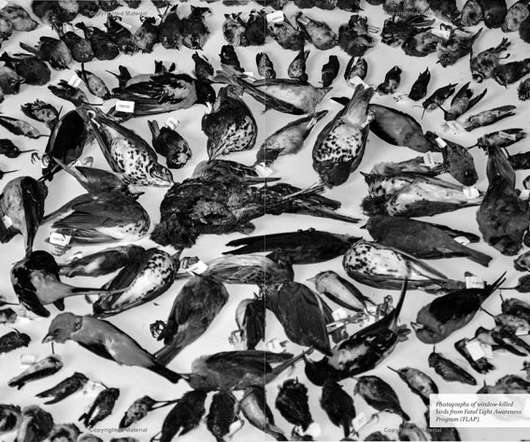Solid Air: Invisible Killer Saving Billions of Birds From Windows–A Book Review
10,000 Birds
JULY 5, 2022
In 2007 I was working in a university building that was just begging for bird feeders. Dead birds are a part of the life of a birder, a feeder of birds, and of bird science. And I don’t think that will be many people. Photographs of window-killed birds from Fatal Light Awareness Program (FLAP) Copyright © 2021 Daniel Klem, Jr.












Let's personalize your content